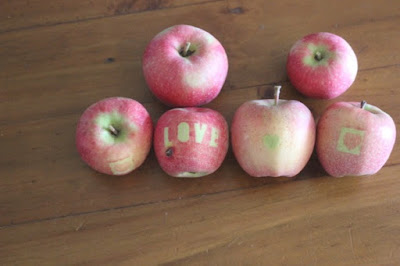I love persimmons, but they are crazy expensive. Most years I can't justify the price of buying a persimmon to eat.
I have been told that persimmon trees are simple to grow, and I have been told they are very productive. To hopefully be able to eat persimmons each year (or at least most years) I bought a persimmon tree (Diospyros kaki), it is a variety called "Hira tanenashi". This variety is said to be one of the best tasting astringent persimmon varieties.
 |
| Persimmons |
My little tree was posted to me. It arrived in the growing season, and was in leaf. The first year I planted it in a pot so I could care for it and protect it a little.
As far as I could see it did no growth that first year. It didn't grow at all, not a single extra leaf, and once the cooler weather came it changed colour, dropped its leaves, and went dormant. I was a little worried, but hoped all was well. Presumably it was doing things under the soil.
Late that winter, while the plant was dormant, I planted my persimmon tree into the yard where it will live out the rest of its life.
 |
| Persimmon tree in a pot |
In spring my persimmon broke dormancy and grew, then stopped growing. This was a good sign. Then it began to grow some more.
The second flush of new growth had some flower buds. I am told the first flowers tend to abort. The fact that it grew at all was enough to allay any concerns I had. The fact that it had flower buds was very positive.
 |
| Persimmon flower bud |
 |
| Flower buds produced in leaf axil on new growth |
The flower buds were lovely and fat, meaning the tree is not a male and should be capable of producing fruit. I paid a lot of money for a parthenocarpic variety, but have received incorrectly labelled plants in the past, so seeing the fat female flowers was a relief.
The buds opened into flowers with yellowish petals and a very slight fragrance. I am told persimmon flowers are unremarkable, but I find them beautiful in their own way.
The persimmon flowers all had some tiny ants crawl in and take their nectar. If you look closely you may see them in the photos below.
I am told the first year that persimmons flower it is common for the flowers to all abort and not set fruit. Even so, I was happy to see that it can flower for me and that the flowers are female. I was happy with this. |
| Persimmon flowers |
 |
| Persimmon flowers and tiny ants |
 |
| Persimmon fruits starting to swell |
 |
| Persimmon flower petals dropping and fruit forming |
The fruits grew but stayed very small. One day one of these green fruits fell off. I put it on the bench to see if it was mature enough to ripen, but sadly it was not. That one never gained colour, and it slowly rotted.
Weeks later some of the fruit started to get a little colour. They were still very small, but they are the first fruit from a small tree, and the season was dry, so they may just produce tiny fruit this year and will have larger fruit next year.
This is an Asian persimmon, and this variety is meant to produce medium to large size fruits. Considering the price I paid for this tree, I hope it was not mislabeled. Only time will tell.
 |
| Persimmon fruits starting to get colour |
 |
| Persimmons starting to get colour |
 |
| Getting colour but still so small |
 |
| Persimmon autumn colours |
 |
| Ripe Hira tanenashi persimmon |
We left the persimmons on the tree to ripen, and we eventually ate the remaining persimmons after they turned soft. The extra time ripening on the tree was needed. The little persimmons tasted great raw, and were incredible on ice cream.
The persimmon fruits were small this year. I am not sure if that is because the tree is young, or if the year was too dry, or if they will always be small. This is the first year it has produced fruit, so there weren't many of them. Hopefully each subsequent year will yield larger numbers of fruit, and hopefully the fruits will be a bit larger.







































